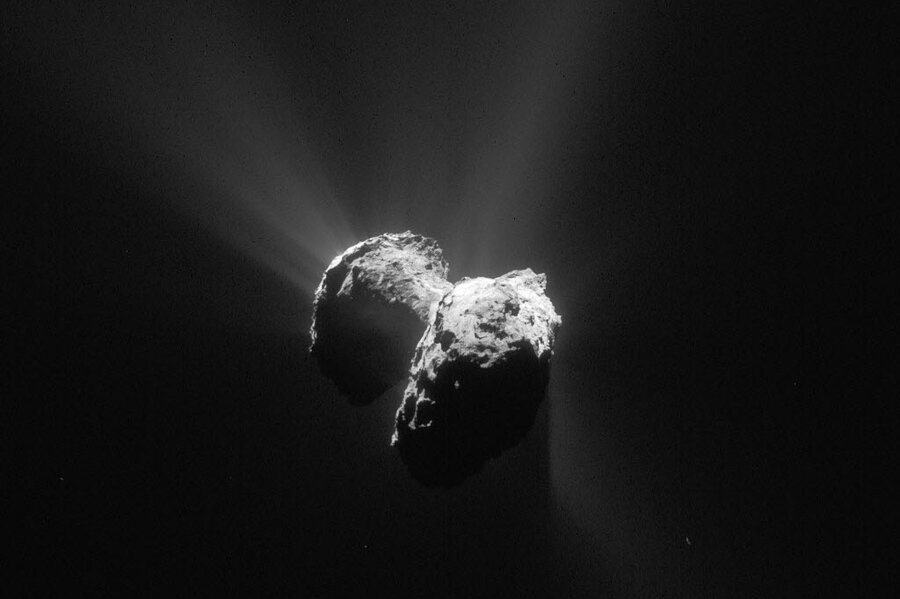Latest from Rosetta: Icy surface comet could tell of comet's origin
Loading...
Two and a half years into a historic mission, the European Space Agency's Rosetta spacecraft is still returning new insights on its subject, Comet 67P/Churyumov-Gerasimenko.
Rosetta has been orbiting the comet since August 2014, and researchers just confirmed the presence of ice on its surface. The discovery introduces the possibility of understanding how the icy space object formed and evolved.
While comets are made primarily of ice, finding it on the surface is rare.
"If the thin ice-rich layers that we see exposed close to the surface are the result of the comet's activity, then they represent its evolution," study lead author Gianrico Filacchione, of the Institute for Space Astrophysics and Planetology at the National Institute for Astrophysics in Rome, told Space.com via email.
The 2.5-mile-wide Comet 67P – which, for a visual, is vaguely duck-shaped – appears to be covered by a nearly uniform layer of dark dust, Dr. Filacchione said.
But close inspection of the imagery sent back by Rosetta's Visual and Infrared Thermal Imaging Spectrometer (VIRTIS) instrument revealed surface ice in two separate, 3.3-foot-wide areas within a region of the comet dubbed Imhotep, the researchers report in a study published in the journal Nature on Wednesday.
Meanwhile, a team of chemists from France and Mexico published a report on Monday announcing they had successfully re-created the kind of ice found in the space stuff that free-floats between stars – and possibly similar to that just confirmed on Comet 67P. The researchers say organic molecules found in their engineered ice is the first evidence for organic compounds known as aldehydes to be present in comets and meteorites, as The Christian Science Monitor previously reported:
If the results hold up – and especially if Rosetta's robotic lander Philae can detect them on comet 67P/Churyumov-Gerasimenko – the work would provide another piece of evidence pointing to comets and asteroids as the mobile chemistry labs that deposited the building blocks for organic life on a young Earth.
Of particular interest are a pair of sugar-like aldehydes found in some of the residue. These aldehydes are known to be important actors in the formation of DNA, which carries an organism's genetic information, and of RNA. RNA plays a number of important biological roles, including service as a genetic traffic cop for the production of proteins in cells.
It is unclear if the hunt for sugars will succeed, however, since ESA hasn’t had significant communication with Philae since July 2015.
Landing the probe on Comet 67P/Churyumov–Gerasimenko some 300 million miles from Earth was an enormous spaceflight achievement – it was the first probe to land on a comet.
Rosetta, with or without Philae, will continue making measurements from orbit until Sept. 30, when it is scheduled to perform a slow-motion crash landing onto the comet's surface.






